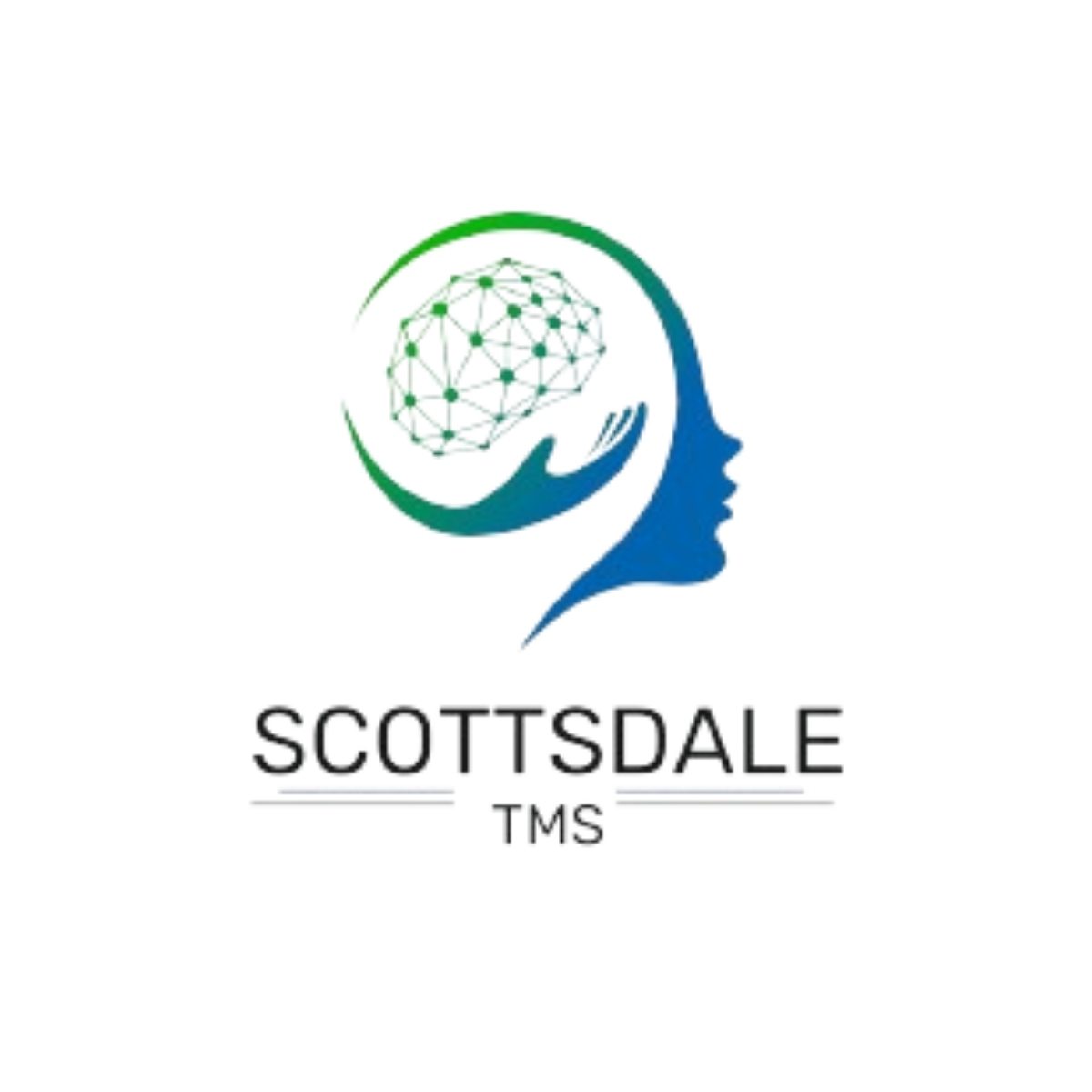Transcranial Magnetic Stimulation (TMS) has emerged as a groundbreaking, non-invasive treatment option for various mental health conditions, especially treatment-resistant depression. But what exactly is a TMS machine, and how does it work?
In this article, we’ll explore the components of TMS devices, the different types of machines, their costs, and why TMS therapy is gaining prominence. Whether you’re a student, patient, or healthcare provider, this guide will help you understand the science and technology behind TMS therapy.
Questions Answered in This Article:
Our Alcohol Addiction Treatment Programs

Scottsdale Rehab
Luxury Personalized Rehab

Hart Rehab
Holistic Luxury Personalized Rehab

Scottsdale Detox
Luxury Medical Detox
TMS Therapy and Depression
Treatment-resistant depression refers to a form of major depressive disorder where patients do not respond adequately to traditional antidepressant medications or psychotherapy.
Treatment-resistant depression affects approximately 30% of individuals diagnosed with depression, making it a significant public health challenge. For many of these patients, options like transcranial magnetic stimulation offer hope when other treatments have failed.
TMS therapy works particularly well for treatment-resistant depression because it directly targets dysfunctional brain circuits involved in mood regulation. By stimulating this region, TMS can help restore normal brain function and alleviate symptoms.
Clinical studies show that repetitive TMS (rTMS) achieves response rates around 50-60% for treatment-resistant depression, significantly higher than placebo effects. Additionally, TMS has minimal systemic side effects and avoids the sedation or cognitive impairments common in some medications or electroconvulsive therapies.
Given its effectiveness, TMS therapy is often recommended after patients have failed two or more antidepressant trials. It is covered by many insurance plans specifically for treatment-resistant depression, underscoring its recognized role in mainstream psychiatric care.
What is a TMS Machine?
A TMS machine is a medical device used to deliver magnetic pulses to specific areas of the brain to stimulate nerve cells and improve brain function. This process, known as transcranial magnetic stimulation TMS, is FDA-approved for treating major depressive disorder, particularly in individuals who have not responded well to medications or therapy.
How Does a TMS Machine Work?
TMS therapy works by producing a strong, focused magnetic field that passes through the skull and targets brain regions involved in mood regulation and cognition. The process involves:
- A TMS coil is placed on the patient’s head.
- The machine produces controlled electromagnetic fields.
- The pulses stimulate nerve cells in the prefrontal cortex.
The principle behind repetitive transcranial magnetic stimulation, also known as repetitive TMS (rTMS), is that repeated magnetic pulses stimulate neurons in targeted brain areas, promoting neuroplasticity and improving brain function.
The magnetic pulses induce small electrical currents in the brain, which can change brain activity patterns. This stimulation helps improve communication between brain regions that affect mood. Each session typically lasts 20 to 40 minutes, with patients undergoing treatments 4–6 times per week over several weeks.
Treatment protocols vary depending on the condition treated and machine type, but are carefully tailored by clinicians to maximize benefits. Over several sessions, patients often report reduced symptoms of depression and anxiety. This makes it an effective option when medications fail.
Benefits of Using a TMS Machine
There are many reasons why patients and doctors choose TMS treatment:
- Non-invasive: No surgery or anesthesia is required.
- Minimal side effects: Most patients only report mild scalp discomfort or headaches.
- Effective for treatment-resistant depression: Many patients improve after several weeks of TMS therapy.
- FDA-approved: In the United States, the FDA has approved TMS devices for depression and OCD.
For people who struggle with medication side effects or lack of response, TMS offers new hope.
Types of TMS Machines
There are several types of TMS devices, each with different capabilities and clinical applications:
Traditional TMS Machines with Figure-8 Coils
These deliver focused magnetic pulses to shallow regions of the brain. They are the most widely used and FDA-approved for depression. The magnetic pulses generate electric currents that modulate neuronal activity, helping to “reset” circuits that may be dysfunctional in disorders like depression and OCD.
Deep TMS Machines (dTMS)
Unlike traditional TMS, deep transcranial magnetic stimulation uses special H-coils that penetrate deeper into the brain, reaching regions involved in mental health conditions like obsessive-compulsive disorder (OCD) and treatment-resistant depression.
Robotic TMS Systems
Some machines include robotic arms that improve coil placement consistency and adjust to patient movement, increasing treatment precision.
Theta Burst Stimulation (TBS)
A newer type of TMS therapy, TBS uses rapid bursts of pulses. Sessions are shorter, lasting only a few minutes. Research shows that it may be as effective as longer sessions of repetitive transcranial magnetic stimulation.
Portable and Compact TMS Devices
Newer models focus on portability, allowing for easier use in smaller clinics or research settings.
Main Components of a TMS Machine
Understanding the key components of TMS machines explains how they function:
- Magnetic Coil: The most critical part, this coil generates electromagnetic fields that send the magnetic pulses. Coils are designed to deliver highly targeted stimulation to specific brain areas.
- Pulse Generator: This device produces the electrical currents that flow through the magnetic coil, creating the magnetic pulses used in therapy.
- Cooling System: Continuous firing of electromagnetic pulses generates heat, so cooling systems prevent overheating, ensuring safety and machine longevity.
- Positioning System: A mechanical arm or robotic assist holds the coil in precise contact with the patient’s head, enabling consistent stimulation of the targeted brain area.
- User Interface and Software: These allow clinicians to set treatment protocols, adjust pulse frequencies, and monitor sessions in real time.
Safety and Side Effects of TMS Therapy
TMS therapy has a strong safety record. Most patients tolerate treatment well, with minimal side effects. The most common side effects include:
- Mild scalp discomfort or headache during the first few sessions
- Tingling sensations or muscle twitches near the coil placement site
- Rarely, seizures, but these are extremely uncommon in properly screened patients
TMS does not involve systemic medications, so it avoids many drug-related adverse effects. However, individuals with metal implants near the head or those with epilepsy may not be suitable candidates for TMS.
How Much Does a TMS Machine Cost?
The cost of TMS systems can vary widely depending on the type and features:
- Entry-level traditional TMS machines typically range from $50,000 to $100,000.
- Deep TMS devices, with their advanced coils designed for deeper brain stimulation, often cost between $80,000 and $150,000.
- Additional expenses include maintenance, software updates, and staff training.
- Some clinics opt to lease machines, which can reduce upfront costs but increase long-term expenses.
While the price might seem high, the growing demand for non-drug therapies like TMS is driving more clinics to invest in these machines.
For patients, the cost is different. A single TMS treatment session can range from $300 to $500. A full course often requires 30 to 36 sessions, which can add up to $10,000 to $15,000.
Factors that influence cost include:
- Type of machine (deep TMS vs. repetitive TMS)
- Brand and FDA approval status
- Clinic location and insurance coverage
- Extra features, such as advanced treatment protocols or enhanced TMS coil designs
While the cost is high, many insurance plans now cover TMS therapy for treatment-resistant depression.
Clinical Applications and Conditions Treated
Besides treatment-resistant depression, TMS is FDA-approved or explored for:
- Obsessive Compulsive Disorder (OCD), where deep TMS has shown benefits in reducing compulsive behaviors.
- Anxiety disorders and PTSD (currently under investigation in clinical trials)
- Emerging data suggest potential in treating migraine, schizophrenia, and chronic pain.
The versatility of TMS therapy reinforces its role as a valuable addition to psychiatric and neurological treatment.
The Future of TMS Machines in Mental Health
Research into TMS devices continues to grow. Scientists are developing new treatment protocols and advanced coils designed to reach different areas of the brain.
Future directions include:
- Personalized treatment protocols that adapt stimulation settings based on real-time brain activity monitoring.
- Integration with neuroimaging and AI to optimize coil placement and stimulation patterns.
- Combining TMS therapy with other treatments, like cognitive behavioral therapy (CBT).
- Enhanced electromagnetic fields technology to improve treatment depth and efficacy.
- Development of smaller, portable machines for easier patient access.
- Exploring new uses, such as treating addiction, chronic pain, and Alzheimer’s disease.
As technology improves, TMS machines will play a bigger role in mental health care.
Finding Help and Treatment
A TMS machine is a sophisticated medical device that delivers targeted magnetic pulses to stimulate brain areas involved in mood and cognition.
With specialized coils and precise delivery systems, these devices offer an effective treatment option for disorders like treatment-resistant depression and OCD. While costs can be significant, the clinical benefits and growing demand highlight the importance of TMS therapy for mental health care.
If you or a loved one is struggling with depression or other hard-to-treat conditions, discussing transcranial magnetic stimulation with a healthcare provider could open doors to a new treatment avenue.

